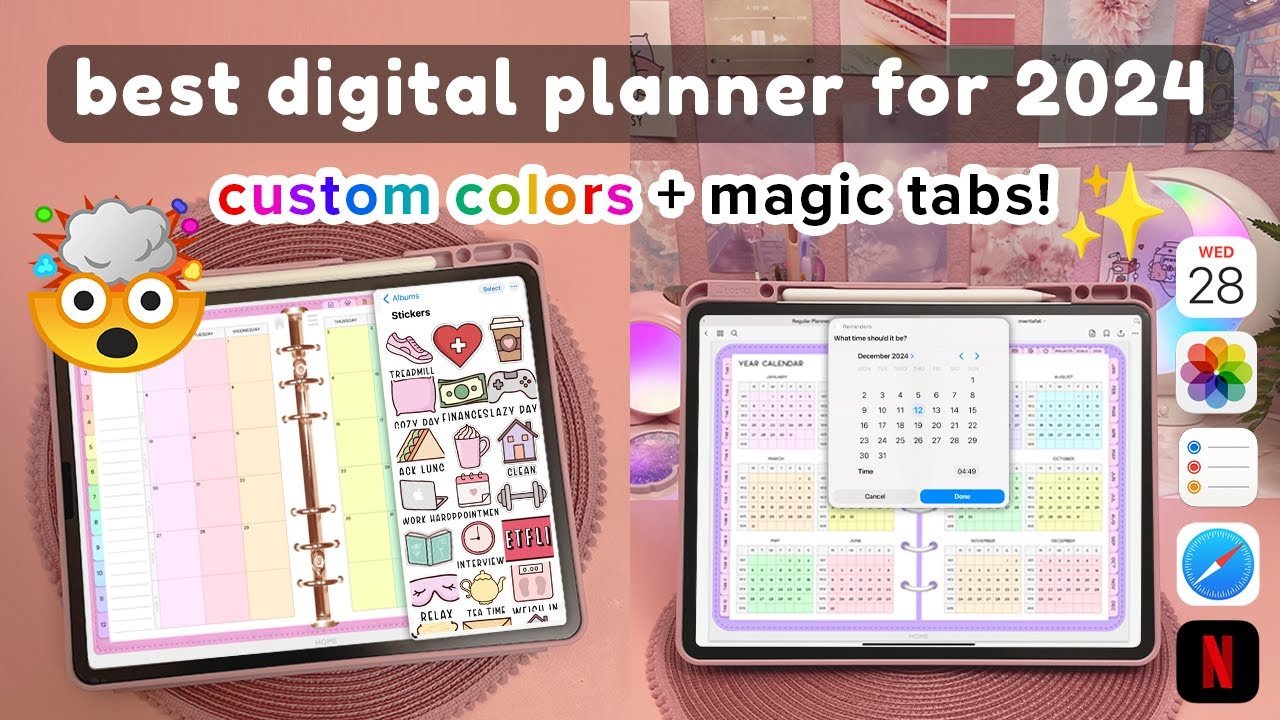
Introduction
In today’s fast-paced digital world, staying organized has become more essential than ever. Traditional paper planners have long been the go-to solution for managing schedules, tasks, and goals. However, the advent of digital technology has introduced innovative alternatives like digital planners for iPad and Android devices. These planners offer a versatile, customizable, and eco-friendly way to manage your daily routines. Unlike paper planners, digital planners provide features like cloud synchronization, multimedia notes, hyperlinks, and reminders that can dramatically enhance productivity. Whether you are a student, professional, or entrepreneur, these planners can adapt to your unique needs. This guide will explore the benefits, features, and practical uses of digital planners, helping you make an informed choice and maximize your organizational efficiency.
Benefits of Using Digital Planners on iPad and Android
Digital planners provide numerous advantages over traditional planners, making them a must-have productivity tool. First, they are environmentally friendly, eliminating the need for paper and ink. They also allow users to consolidate multiple planners into one digital format, reducing clutter. Features like cloud storage ensure that your schedules and notes are accessible across devices, making it easier to stay organized wherever you go. Additionally, digital planners often integrate with other apps, such as calendars, reminders, and to-do lists, creating a seamless workflow. Customization is another significant benefit; users can change layouts, colors, and fonts according to their preferences. Whether you prefer a minimalist setup or a highly detailed planner, digital tools provide flexibility. Overall, digital planners offer convenience, accessibility, and personalization that traditional planners cannot match, helping users save time and enhance productivity efficiently.
Key Features of Digital Planners for iPad and Android
Modern digital planners come with a wide array of features designed to enhance organization and productivity. One of the most important features is note-taking, which allows users to type, write, or even draw directly on the planner. Hyperlinks and tabs enable easy navigation between sections, providing a digital experience that mimics flipping through pages. Interactive calendars and task lists help track deadlines and priorities efficiently. Many planners also support multimedia integration, allowing users to attach images, videos, and audio notes. Cloud synchronization ensures that all your data is backed up and accessible from multiple devices, reducing the risk of losing important information. Some planners even include goal-tracking tools and habit trackers, offering insights into your productivity patterns. Overall, the combination of interactive, multimedia, and synchronization features makes digital planners a powerful productivity tool for iPad and Android users alike.
How to Choose the Right Digital Planner
Selecting the right digital planner depends on your personal workflow and preferences. Start by identifying your primary needs: do you need it for daily scheduling, task management, or goal tracking? Consider the device you will use most often iPad or Android as some planners are optimized for specific platforms. Evaluate features such as note-taking options, customization flexibility, calendar integration, and cloud support. User interface and ease of use are also crucial; a cluttered or complicated layout can hinder productivity. Pricing and subscription models should be considered, as some digital planners are free, while others require a one-time purchase or monthly subscription. Reading user reviews can provide insights into reliability and usability. By analyzing your workflow and priorities, you can select a planner that complements your lifestyle, ensuring that your organization system is both effective and enjoyable.
Tips to Maximize Productivity with Digital Planners
Using a digital planner effectively requires strategy and consistency. First, set up daily, weekly, and monthly plans to visualize your schedule clearly. Color-coding tasks or using tags can help prioritize urgent versus low-priority tasks. Leverage reminders and notifications to ensure deadlines are never missed. Incorporate goal-setting sections to track both short-term and long-term objectives. Regularly review your planner to evaluate progress and adjust plans as needed. Another useful tip is integrating your digital planner with other productivity apps, like email clients, task managers, or cloud storage, to streamline workflow. Finally, explore features such as templates, stickers, and multimedia notes to make the planning process engaging and motivating. By combining these tips with the planner’s built-in features, you can significantly improve time management, reduce stress, and achieve your goals more efficiently.
Conclusion
Digital planners for iPad and Android represent a modern approach to organization and productivity. Their customizable features, cloud integration, and interactive tools offer a significant advantage over traditional planners. By selecting the right planner, understanding its features, and implementing strategies to maximize efficiency, users can streamline their workflow, track goals, and manage tasks effectively. Whether you are a student, professional, or creative individual, digital planners provide the flexibility and functionality necessary to stay organized in a busy digital era. Embracing these tools can transform your approach to planning, enabling you to save time, reduce stress, and focus on what truly matters.
FAQs
Q1: Are digital planners better than paper planners?
Digital planners offer flexibility, cloud access, and multimedia support, which paper planners cannot. However, personal preference plays a role—some users still prefer the tactile experience of paper.
Q2: Can I use the same planner on both iPad and Android?
Some planners are cross-platform, allowing synchronization between devices. Always check the planner’s compatibility before purchasing.
Q3: Do digital planners require an internet connection?
Most planners can work offline, but cloud synchronization and backups require an internet connection to ensure your data is updated across devices.
Q4: Are digital planners expensive?
Pricing varies; some digital planners are free with limited features, while premium versions may require a one-time payment or subscription.
Q5: How do I make my digital planner more productive?
Use features like reminders, task prioritization, color-coding, and goal tracking. Regularly update and review your planner to maintain efficiency.
Leave a Reply